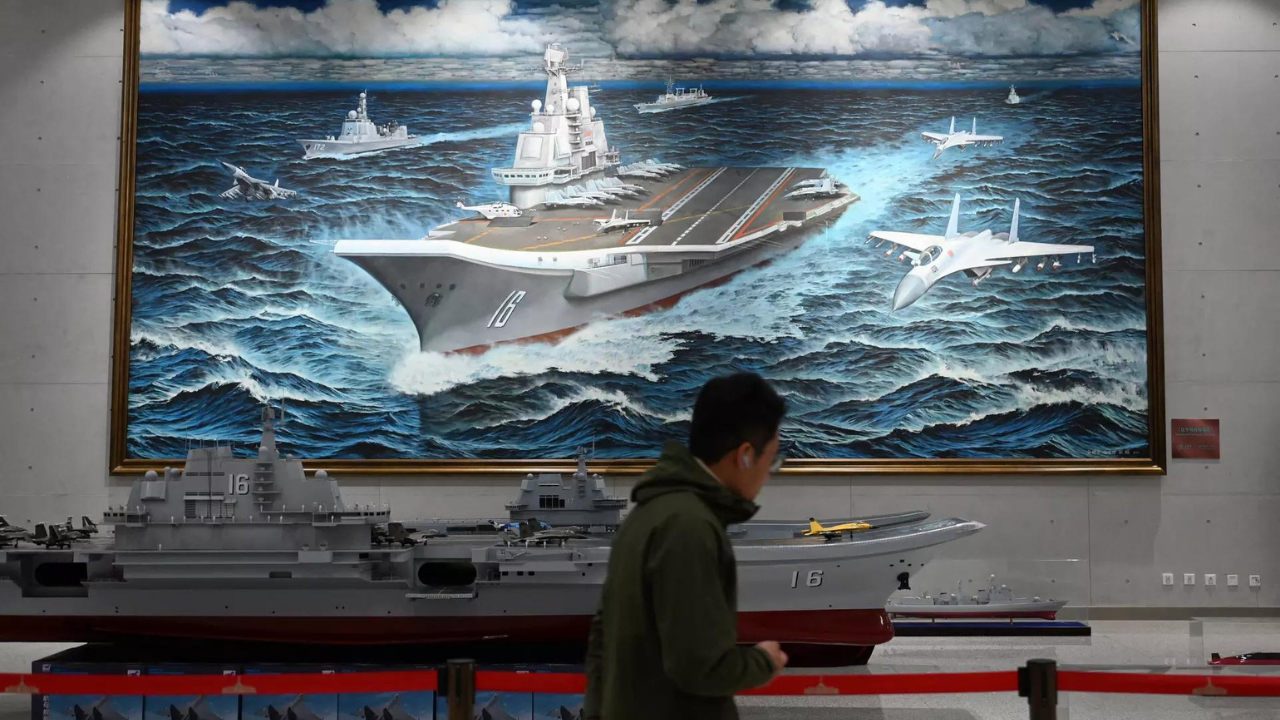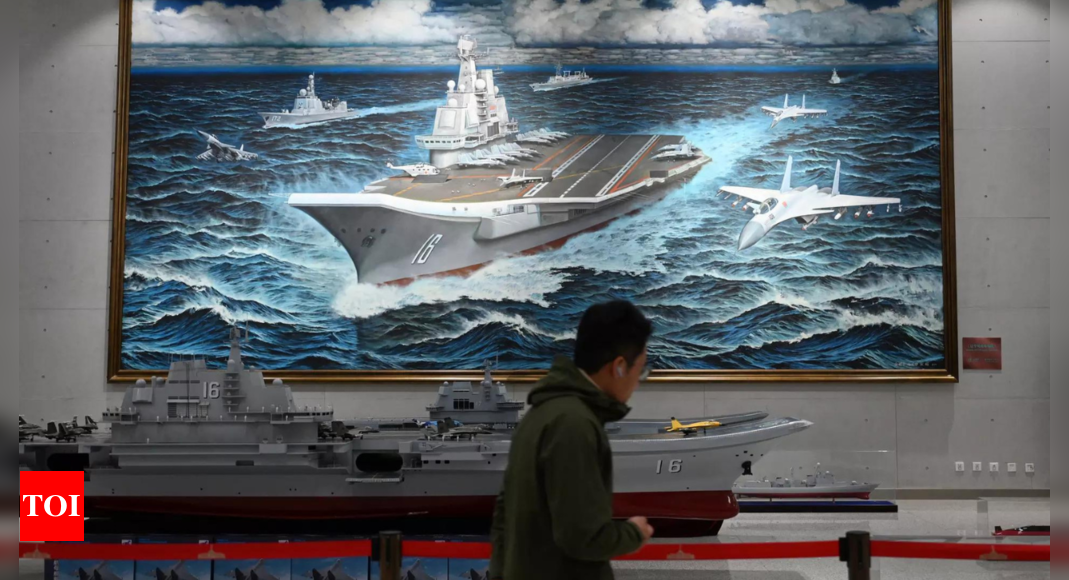
NEW DELHI: China’s ambitious naval expansion, marked by the construction of its fourth aircraft carrier, the Type 004, is poised to reshape the maritime balance of power in Asia and potentially challenge the US navy’s dominance. According to Yuan, a key figure in the carrier’s development, there have been no delays in its construction, with illustrations suggesting the vessel is being built at Shanghai’s Jiangnan shipyard, a South China Morning Post report said.
Experts like Abdul Rahman Yaacob from the Lowy Institute speculate that if powered by nuclear energy, the Type 004 could wield advanced, power-intensive weaponry and operate at sea for extended periods without the need for replenishment.This capability would enable the Chinese navy to project a more formidable presence in international waters, despite China’s limited regional military bases compared to the US’s extensive network and alliances with countries such as Australia, South Korea, and Japan.
The potential nuclear propulsion of the Type 004 raises its strategic profile, making it comparable to the US’s Nimitz-class carriers in terms of size and capability. Malcolm Davis of the Australian Strategic Policy Institute notes that while this development recalibrates regional power dynamics, the operational focus of Chinese carriers remains primarily on supporting joint landing operations targeting Taiwan. However, their presence will also boost China’s confidence in other regional contingencies, the SCMP report said.
The Fujian, China’s third carrier, already features cutting-edge technology like electromagnetic catapults, setting a precedent for the advanced capabilities expected of the Type 004. China’s naval strategy, aiming to extend its influence beyond the second island chain and into the Indian Ocean, signifies a long-term goal to challenge US maritime supremacy.
Regional analysts like Joshua Bernard Espeña highlight the increased tensions this expansion could cause, especially in contested areas like the South China Sea and the Taiwan Strait. Southeast Asian nations are urged to develop countermeasures to maintain autonomy in the face of China’s growing naval power.
As China continues to modernize its fleet, adding guided-missile destroyers and amphibious assault ships capable of operating far from its shores, the global maritime order stands at a crossroads. The rise of China’s sea power, complemented by its suite of military capabilities, poses a direct challenge to the free and open Indo-Pacific vision championed by the US and its allies, the SCMP report said.
Experts like Abdul Rahman Yaacob from the Lowy Institute speculate that if powered by nuclear energy, the Type 004 could wield advanced, power-intensive weaponry and operate at sea for extended periods without the need for replenishment.This capability would enable the Chinese navy to project a more formidable presence in international waters, despite China’s limited regional military bases compared to the US’s extensive network and alliances with countries such as Australia, South Korea, and Japan.
The potential nuclear propulsion of the Type 004 raises its strategic profile, making it comparable to the US’s Nimitz-class carriers in terms of size and capability. Malcolm Davis of the Australian Strategic Policy Institute notes that while this development recalibrates regional power dynamics, the operational focus of Chinese carriers remains primarily on supporting joint landing operations targeting Taiwan. However, their presence will also boost China’s confidence in other regional contingencies, the SCMP report said.
The Fujian, China’s third carrier, already features cutting-edge technology like electromagnetic catapults, setting a precedent for the advanced capabilities expected of the Type 004. China’s naval strategy, aiming to extend its influence beyond the second island chain and into the Indian Ocean, signifies a long-term goal to challenge US maritime supremacy.
Regional analysts like Joshua Bernard Espeña highlight the increased tensions this expansion could cause, especially in contested areas like the South China Sea and the Taiwan Strait. Southeast Asian nations are urged to develop countermeasures to maintain autonomy in the face of China’s growing naval power.
As China continues to modernize its fleet, adding guided-missile destroyers and amphibious assault ships capable of operating far from its shores, the global maritime order stands at a crossroads. The rise of China’s sea power, complemented by its suite of military capabilities, poses a direct challenge to the free and open Indo-Pacific vision championed by the US and its allies, the SCMP report said.
Source link

